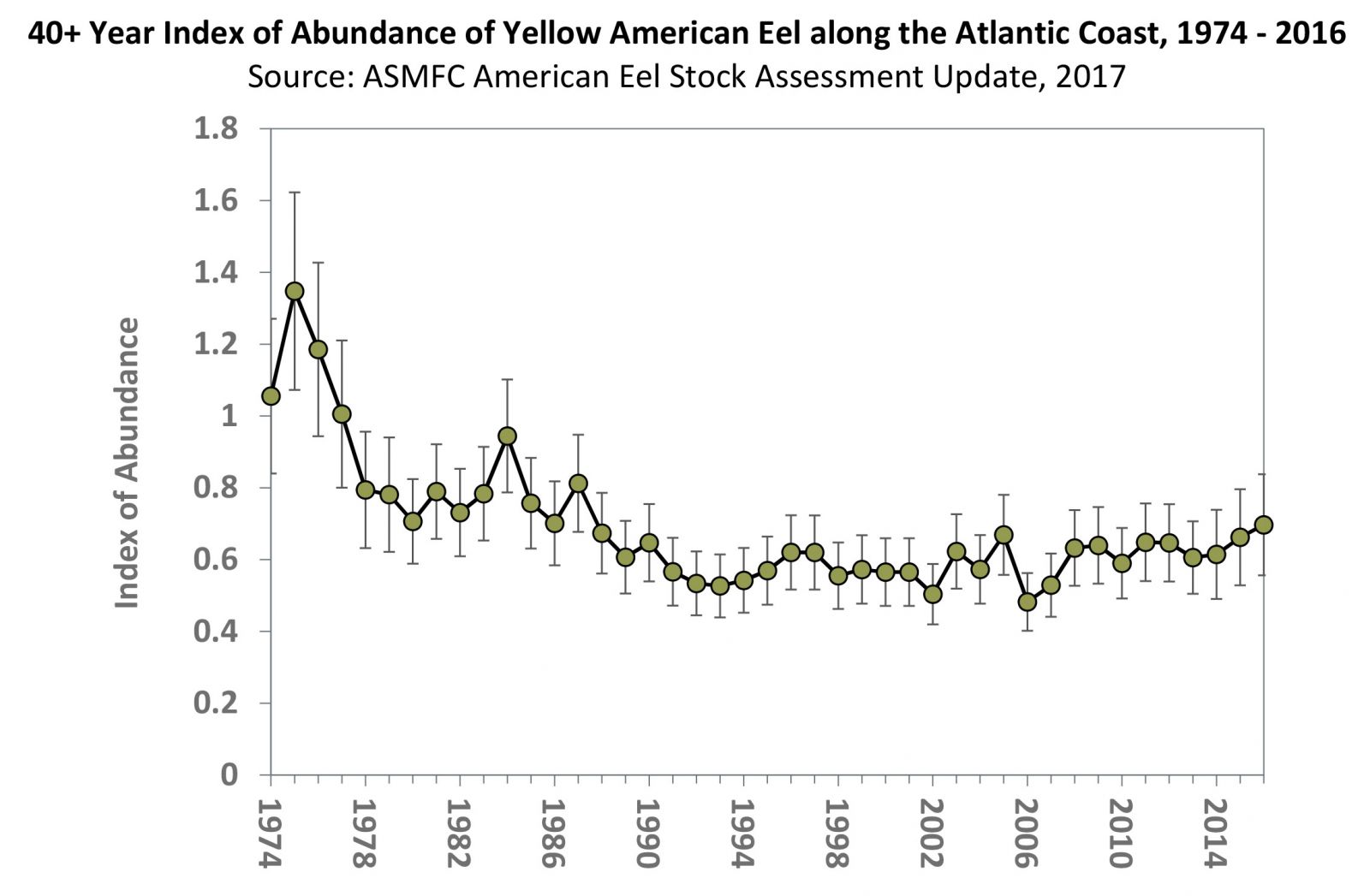Market price of elvers down from over $2000 a lb last year to $500 this year. I do feel bad for the legitimate folks who depend on this fishery for important incremental income, but hope the price drop dissuades the amount of poaching that goes on.
Baby eel prices drop as Maine fishermen grapple with virus
 pressherald.com/2020/04/19/baby-eel-prices-drop-as-maine-fishermen-grapple-with-virus/
pressherald.com/2020/04/19/baby-eel-prices-drop-as-maine-fishermen-grapple-with-virus/
By PATRICK WHITTLE Associated PressApril 19, 2020

The price of one of the most lucrative marine resources in Maine – baby eels – has tumbled as fishermen grapple with the difficulty of working around constraints caused by the coronavirus pandemic.
Maine is the only U.S. state with a significant fishery for the valuable baby eels, called elvers, used by Asian aquaculture companies as seed stock. The elvers are eventually raised to maturity for use in Japanese cuisine, some of which is sold in the U.S. market.

Baby eels, also known as elvers. Robert F. Bukaty/Associated Press
Elvers were often worth less than $200 per pound until 2011, when international sources of the eels dried up and the Maine price jumped to nearly $900 per pound. They’ve been worth more than $800 every year since, and hit a high price of more than $2,360 in 2018.
Some fishermen call the elvers “wriggling gold,” but this year, the catch is only selling for about $500 per pound.
Industry members are blaming concerns about the coronavirus for the plummeting prices.
Dealers aren’t paying as much for the elvers this year, in part because shipping is more difficult and the worldwide seafood industry has been slowed by the virus, they said. Maine also delayed the start of its own season by eight days, to March 30, and is asking fishermen to follow safety rules, such as staying 6 feet apart.
“We’re just going to the river and we’re going straight home,” said Julie Keene, an elver fisherman from the Lubec area. “Price is a lot less than normal. I think we’ve been greatly affected.”
The need to exercise social distancing while working is a change for elver fishermen, who sometimes line the state’s most productive rivers and streams cheek by jowl at the height of the season, which runs until early June.
The state should be able to complete the season if “everybody stays six feet away, keeps their distance and does everything right,” said Darrell Young, co-director of the Maine Elver Fishermen Association. However, selling and shipping the eels will remain a challenge no matter what fishermen do, he said.
For most people, the new coronavirus causes mild or moderate symptoms, such as fever and cough that clear up in two to three weeks. For some, especially older adults and people with existing health problems, it can cause more severe illness, including pneumonia and death. Maine has had more than 800 cases and 34 deaths.
The elver fishery has weathered difficult times in the past, with the enforcement of stricter quotas from interstate regulators and years of protests from environmental groups who see the fishery as unsustainable. The trouble with the coronavirus is a new challenge, said Mitchell Feigenbaum, an elver dealer who said he nonetheless believes the fishery can sustain a full season this year.
“But a lot of our buyers and end users are going through what we’re going through. Uncertainty. Logistical risks and nightmares,” he said.
Baby eel prices drop as Maine fishermen grapple with virus
By PATRICK WHITTLE Associated PressApril 19, 2020

The price of one of the most lucrative marine resources in Maine – baby eels – has tumbled as fishermen grapple with the difficulty of working around constraints caused by the coronavirus pandemic.
Maine is the only U.S. state with a significant fishery for the valuable baby eels, called elvers, used by Asian aquaculture companies as seed stock. The elvers are eventually raised to maturity for use in Japanese cuisine, some of which is sold in the U.S. market.

Baby eels, also known as elvers. Robert F. Bukaty/Associated Press
Elvers were often worth less than $200 per pound until 2011, when international sources of the eels dried up and the Maine price jumped to nearly $900 per pound. They’ve been worth more than $800 every year since, and hit a high price of more than $2,360 in 2018.
Some fishermen call the elvers “wriggling gold,” but this year, the catch is only selling for about $500 per pound.
Industry members are blaming concerns about the coronavirus for the plummeting prices.
Dealers aren’t paying as much for the elvers this year, in part because shipping is more difficult and the worldwide seafood industry has been slowed by the virus, they said. Maine also delayed the start of its own season by eight days, to March 30, and is asking fishermen to follow safety rules, such as staying 6 feet apart.
“We’re just going to the river and we’re going straight home,” said Julie Keene, an elver fisherman from the Lubec area. “Price is a lot less than normal. I think we’ve been greatly affected.”
The need to exercise social distancing while working is a change for elver fishermen, who sometimes line the state’s most productive rivers and streams cheek by jowl at the height of the season, which runs until early June.
The state should be able to complete the season if “everybody stays six feet away, keeps their distance and does everything right,” said Darrell Young, co-director of the Maine Elver Fishermen Association. However, selling and shipping the eels will remain a challenge no matter what fishermen do, he said.
For most people, the new coronavirus causes mild or moderate symptoms, such as fever and cough that clear up in two to three weeks. For some, especially older adults and people with existing health problems, it can cause more severe illness, including pneumonia and death. Maine has had more than 800 cases and 34 deaths.
The elver fishery has weathered difficult times in the past, with the enforcement of stricter quotas from interstate regulators and years of protests from environmental groups who see the fishery as unsustainable. The trouble with the coronavirus is a new challenge, said Mitchell Feigenbaum, an elver dealer who said he nonetheless believes the fishery can sustain a full season this year.
“But a lot of our buyers and end users are going through what we’re going through. Uncertainty. Logistical risks and nightmares,” he said.




